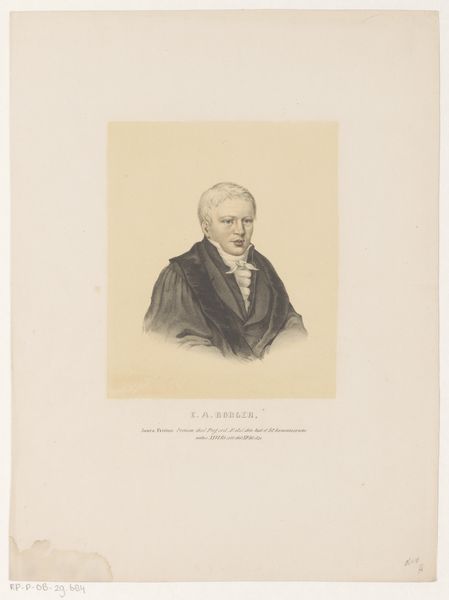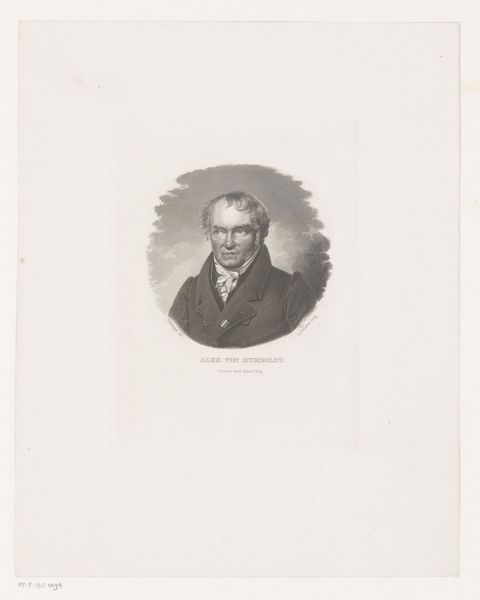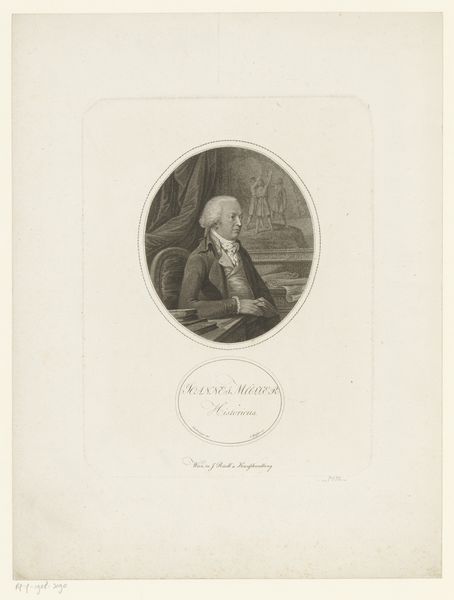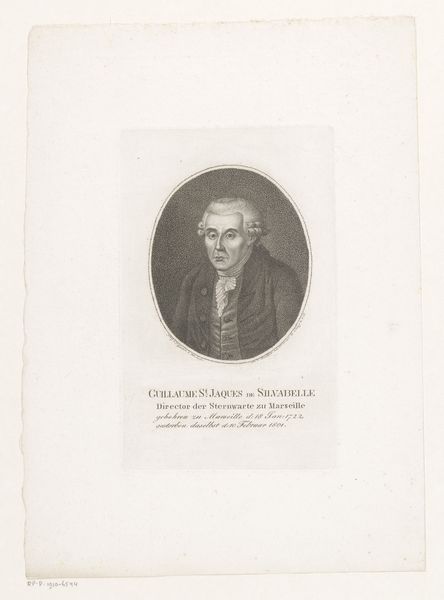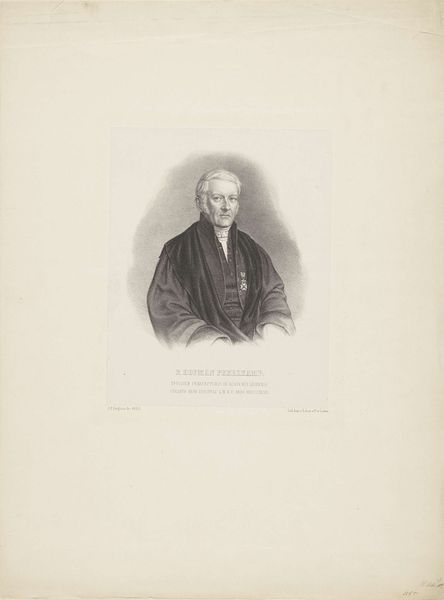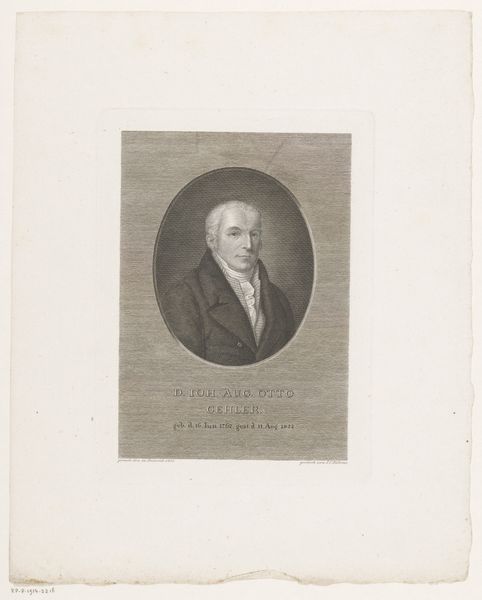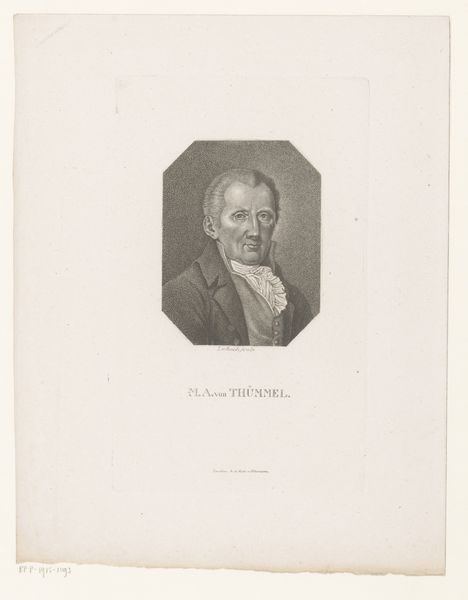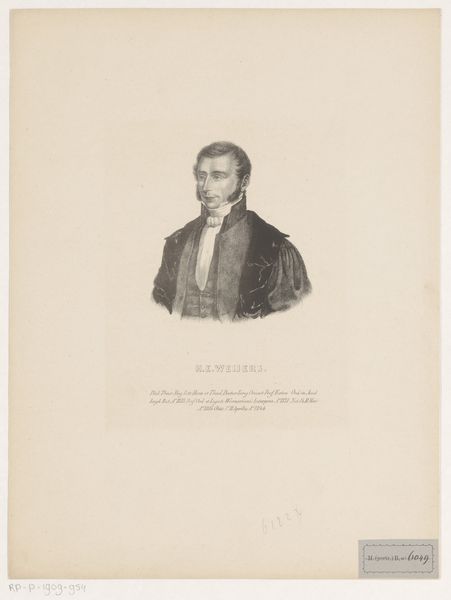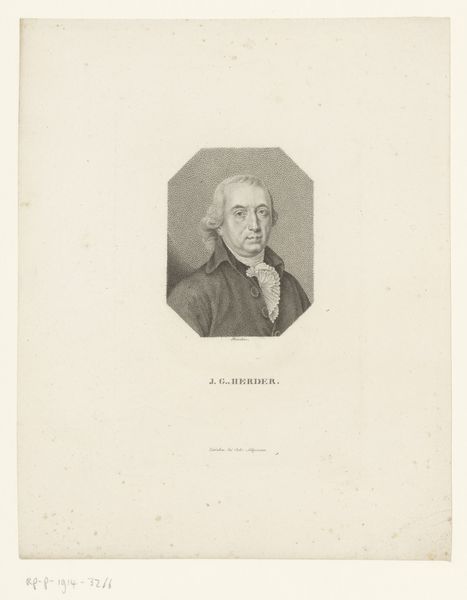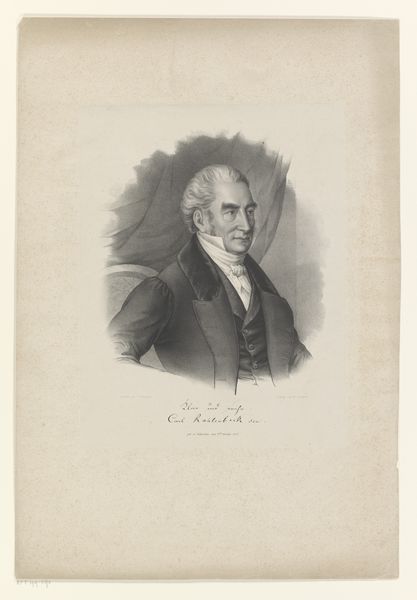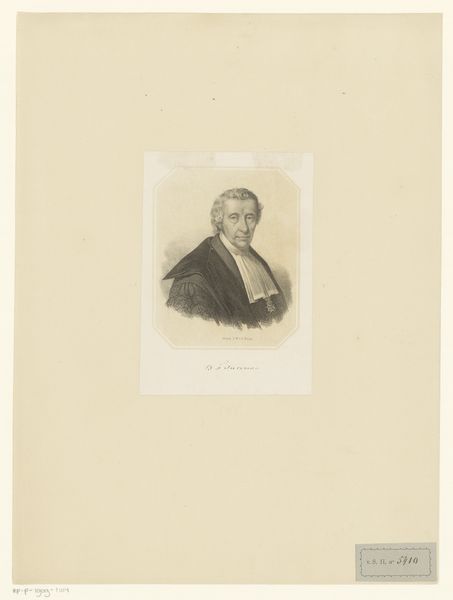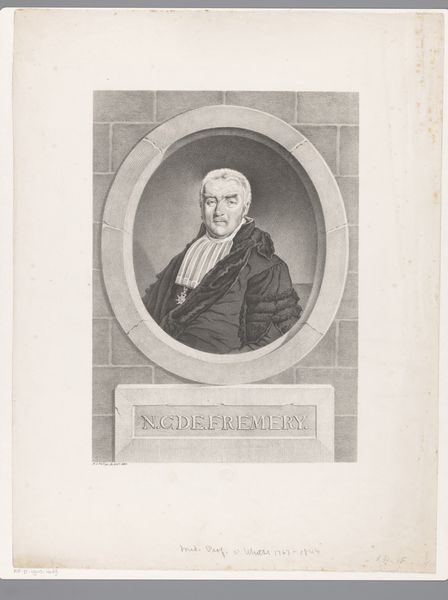
engraving
#
portrait
#
neoclacissism
#
academic-art
#
engraving
Dimensions: height 300 mm, width 251 mm
Copyright: Rijks Museum: Open Domain
Editor: So, here we have "Portret van Johannes Clarisse," an engraving from somewhere between 1809 and 1853. It gives me such a formal, academic impression. He looks rather stern, doesn't he? What's your read on this, from your expert perspective? Curator: Well, what I find compelling is how this seemingly straightforward portrait whispers tales of transition. It's neoclassical, sure, with its orderly composition, but look closer – feel the emerging Romantic spirit lurking in the shadows. Editor: Romantic, really? I see more...stiffness, I guess? Curator: Precisely! But that's the beauty. This was a time of immense social upheaval. The French Revolution had ended but its influences where lasting for decades. Clarisse here is depicted as this rock of academic order and certainty, in an era when many long held beleifs were challenged. The engraving technique itself, the meticulous crosshatching, adds to the sense of control, wouldn’t you agree? Editor: Definitely! The precision does underscore that controlled feeling. So it’s about this tension, this balancing act between order and… revolution? Curator: I think you nailed it. It makes one wonder: what were Johannes Clarisse's own thoughts on the shifting sands beneath his feet? Editor: Wow, I hadn't thought about it that way at all! It’s more than just a portrait, it’s a reflection of a society at a crossroads. Curator: Exactly. Art invites us to linger in the questions.
Comments
No comments
Be the first to comment and join the conversation on the ultimate creative platform.
